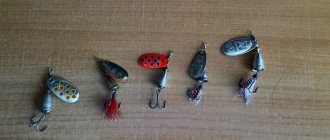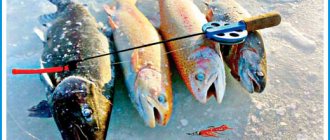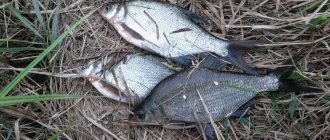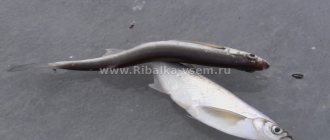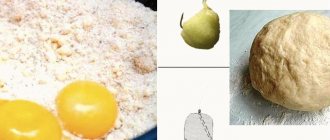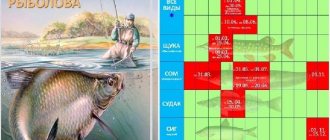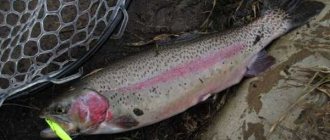To prepare many fishing feed mixtures, additives are used to stimulate a high level of appetite in fish, thus increasing the catch rate. Molasses for fishing is just such a product, which has the excellent property of luring fish to the baited fishing point. Fishermen learned about these qualities of the additive relatively recently, no more than two decades ago. But we can already confidently note the fact that adding molasses to bait is a very common technique that seduces fish with a sweet tooth, the list of which includes such popular prey items among fishermen as crucian carp, bream and roach.
The purpose of this article will be to introduce the fisherman to this type of feed additive, and we will also teach how to prepare a sweet mass from ordinary culinary products and correctly add the product to the feed mixture, making an effective bait mix.
What is molasses
Although the term is well-known in fishing circles, and the use of molasses for fishing is already commonplace, few anglers are thoroughly aware of the origin of this sweet and viscous, brown-black mass. The sweet taste and specific smell have a first-hand effect on stimulating the appetite of fish. The sweet substance itself is a by-product of sugar production during the processing of sugar beets at sugar refineries. Subsequently, additives are prepared from these production wastes and used in feed for cattle and pig farming.
To a greater extent, this product is familiar to the average person as beet molasses, which can be found in stores specialized in livestock feed, poured into polyethylene canisters with a volume of 5-10 liters. The composition of the syrup consists of the following components: water - 25%, nitrogenous compounds -10%, carbohydrates - about 60%, ash -10%. Based on these proportions, we can safely say that molasses is a fairly high carbohydrate product that can actively stimulate appetite, which, in principle, is its main advantage in livestock farming and the fishing industry.
Molasses recipe
Molasses for fishing is prepared from products that are usually always available in the house. The only thing that may not be available is baby corn formula, which you will have to go to the store for. Instead, you can take flakes or just cereal.
Homemade corn syrup is made from the following ingredients:
- Sugar – 250 g;
- Water – 100 ml;
- Citric acid – 1/2 teaspoon;
- Baking soda – 1/4 teaspoon;
- Children's corn porridge (dry mixture) – approximately 50 g.
Preparing a product such as molasses with your own hands will not take much time, but you will need to follow the process.
The dishes will not be damaged by the fact that syrup was boiled in them, so you can take any pan of suitable size and then return it to your wife safe and sound.
- Pour water into the pan. After it boils, add granulated sugar. Stir so that it doesn't burn.
- As soon as the sugar is completely dissolved, add citric acid. After this, cook the mixture for about 15 - 20 minutes.
- In the meantime, you need to dissolve the soda in a small amount of water (2 tbsp). After the specified cooking time, pour in the soda solution. If the pan is not high, this should be done carefully, as the soda will react with the acid, causing foam to rise.
- Cook the syrup over low heat for about 15 minutes. At this point the molasses will begin to darken. Don't worry if the molasses has not reached the desired shade within 5 minutes, just continue cooking it.
- The corn mixture or corn grits crushed in a coffee grinder should be filled with hot water. Use enough water to obtain the consistency of liquid mashed potatoes. Stir the resulting mass thoroughly. To get rid of lumps, rub it through a sieve.
- When the molasses darkens, it is removed from the heat and mixed with the corn mixture.
You need to store molasses in a closed, preferably glass container, in a dark place. When exposed to sunlight, the product's characteristics change and its effectiveness decreases. From the specified amount of products, approximately 400 ml of the finished supplement is obtained.
Why add molasses to bait?
Molasses for fishing has the primary goal of activating the appetite of fish. These conditions are achieved by the specific smell of the syrup and its rather strong and even sickly sweet taste. Thus, the substance can be considered a full-fledged natural attractant with a sweet focus, which perfectly collects many types of carp fish at the feeding point, on the bait or at the feeder.
Important! In addition to its taste, molasses in bait successfully acts as a binding element, having a high degree of viscosity.
By using the volume of additive added, anglers effectively control the viscosity of the bait mixture, regulating the solubility of the mixture in water and its friability. Another useful property is the richness of the color of the syrup. As with viscosity control, manipulation of the additive volume affects the color of the feeding mixture, making light mash much darker than its original color.
A simple additive to bait and bait that will increase your catch several times
Many people have heard that sweet aromatic syrups are often added to bait and bait and that they significantly improve their attracting properties. Is it really?
We’ll tell you what molasses and molasses are, what they are like and
how they are used in fishing using a specific example of one recipe for a catchy bait
.
See it at the bottom of the article
.
Molasses and corn syrup
Molasses is molasses, a by-product of the sugar production process.
The most commonly found molasses on sale is beet molasses, but it can also be made from cane molasses. This is due to the fact that in our country sugar is produced mainly from beets.
In terms of taste, beet molasses is inferior to cane molasses and is not used in cooking, but in fishing this is not of particular importance.
Molasses is a thick dark brown syrup with a specific taste and smell, slightly reminiscent of caramel.
Used as an additive to groundbait, applied to baits or as a component in dough-based baits, for the manufacture of boilies and pellets. Due to its high sugar content, it acts as a binding component and a natural preservative.
Effective for catching carp, crucian carp, bream, roach and other fish of the carp family.
Often in fishing stores you can find “corn molasses” - a clear syrup with a consistency reminiscent of young honey. It is an alternative to beet or cane molasses.
Sweet syrups, molasses and molasses, in everyday understanding, are almost the same thing
.
Therefore, manufacturers of fishing supplements use the most attractive name “molasses”
.
Corn syrup serves as a natural sugar substitute and is widely used in baking and confectionery production. In terms of properties, it is in many ways similar to beet and cane molasses and is widely used in fishing as an additive.
Corn syrup
To improve the attractive properties of molasses, various flavors are added to it - anise, vanilla, cocoa, hemp, berry-fruit and other odors.
Molasses in bait and baits
For one kilogram of dry mixture or grain-based bait, add 100-250 grams of molasses, depending on the composition of the bait and fishing conditions. It must be taken into account that sugar syrups tend to bind.
Before adding to bait, molasses is diluted with water in a ratio of 1 to 1 or stronger and added to the mixture at the moistening stage.
Molasses is also added to mixtures that are used to make boilies or pellets and dough-based baits.
For example, here is a recipe for a potato bait with molasses for catching crucian carp, carp or bream.
Potato attachment
- Take medium-sized potatoes and boil them until tender;
- Peel it and mash it into a puree with a fork or masher;
- Add one teaspoon of vegetable oil and a tablespoon of molasses to the puree, stir everything until smooth;
- Add wheat flour to the resulting mass and knead the dough.
Add as much flour as necessary to obtain an elastic, homogeneous mass.
The finished dough should be wrapped in a plastic bag and refrigerated overnight. During this time, all the ingredients will combine with each other, the dough will become more elastic and fragrant.
.
The resulting dough is used as a nozzle material - small pieces are plucked off from it, which are formed into balls and placed on a hook.
Some fishermen prepare balls of the required size in advance, boil them and even bake them - this makes the bait more stable and holds it securely on the hook, but in this case molasses is not added. It is used as a dip - applied to the bait while fishing.
To make the dough with the addition of molasses stick better to the hook and last longer, it is mixed with ordinary cotton wool:
- the dough is rolled out into a pancake;
- a piece of cotton wool is distributed over it;
- rolls into a tube and kneads.
Dough with cotton wool
By analogy with the potato paste, the dough can be made using pea puree - you get a kind of mash with the addition of molasses.
Subscribe to
fishing subtleties , put
How does molasses affect fish?
Particular attention should be paid to the effect of syrup on stimulating appetite and digestion of fish. The sweet carbohydrate mass, entering the intestines of fish, causes a specific reaction, accelerating the digestion process. Molasses is a kind of laxative for fish. Food digested at a high speed does not linger in the digestive tract, but is quickly excreted and thus does not saturate the trophy. The fish, having tasted the nutritious mixture with syrup, constantly feels an increase in appetite, again and again coming to the point with the delicacy served in the hope of being satisfied again.
Thus, it becomes attached to the bait supply zone for a long time, without leaving the fishing point over long distances, and reclassification of the fish into a trophy becomes only a matter of time and patience of the angler. As a conclusion, we state the fact that the aroma of molasses, together with its effect on the digestion of fish, makes the product an effective and efficient means in the prepared bait mixture, which is successfully used by modern fishermen who catch peaceful species of carp fish.
What time of year is best to use
Regardless of the method and type of preparation of molasses, the priority season of the year for using the additive is considered to be summer, when fish largely feed on plant foods and readily respond to the sweet taste. You can also note the practicality of using it at the end of spring and the beginning of the autumn period of the year, when the water in reservoirs is already warmed up or has not yet completely cooled down.
In winter, the quality of fishing with food and the addition of molasses to its composition is not so high and winter fishermen rarely use such flavorful, sweet-oriented complementary food, using neutral and not strongly flavored food. Consequently, based on the practical experience of using syrup, one can notice a predisposition to use it in open, already sufficiently warmed and temperature-stable water, which is what you should adhere to when planning fishing strategies using bait with molasses additives.
Molasses in fishing
In European countries, fishermen have been using molasses in their difficult task for more than thirty years. It is one of the main additives for fishermen. It entered the fishing industry only because of its unique composition of chemical elements. Molasses is a bait that affects the behavior of fish in the water.
Due to its high content of carbohydrates and amides, it is a very important source of energy for all living creatures. Scientists have proven that in the absence of these substances, the processes of energy metabolism and metabolism will not occur in the body. In addition, molasses also contains 10% ash, which is a laxative for fish too. Simply put, molasses is an energy concentrate. After eating complementary foods with molasses, the fish feels an increase in appetite and a surge of strength. Complementary feeding invigorates, while increasing hunger, and ash forces the fish’s body to defecate, preventing it from getting enough. Accordingly, there is no satiety, and the feeling of hunger increases. The more a fish eats, the more it wants to eat. When a whole flock of fish swims in to feed, a crazy rush ensues.
The British were the first to come up with the idea of using molasses as bait. There is an opinion that thanks to this bait, the English fishermen team is leading in the float fishing championships. Their motto is that it is better to forget your fishing rod when going fishing than not to take molasses.
Of course, fishing tackle manufacturers use this bait. They use molasses in complementary foods, producing their products in dry and liquid form. They strive to constantly improve the product to increase consumer demand for it. Amino acids or multivitamins are added to it, flavored, preservatives are included to increase shelf life, and produced in large containers. The meaning of the product itself does not change too much from these additives. Only the price of the bait changes. Also, in combination with additives, molasses can be used as bait for various types of fish.
One of the important qualities of this bait is the ability to dissolve in both cold and hot water. It can be used perfectly in winter when fishing in icy water. Many people use it for bream fishing as the main additive. It is very effective to mix molasses with complementary foods an hour before feeding and leave for an hour. Molasses can be diluted with water or added to food.
How much molasses to add to bait?
When forming feeding mixes, the issue of the amount of sweet taste added to complementary foods is important. It is worth noting that in the classic version, before adding molasses to the feed, it is diluted with water taken from the reservoir in volumes of proportions or a ratio of 1 to 5. After which this liquid and sweet consistency is used as a regular moisturizer, mixing complementary foods to the desired viscosity . You can also mix mixed drinks with concentrated undiluted molasses. In this case, about 50-70 grams of pure syrup will be required per kilogram of bait. As a rule, in order to get a greater effect, large batches of feeding mixtures are prepared using molasses, where, for example, 250 grams of syrup are added to 4 kg of feed.
Important! There is no need to be afraid of volumes or worry about their damage. After all, sweet syrup is an excellent preservative that slows down the oxidation of feed, and therefore its souring and the appearance of mold, even in hot weather.
An excellent example in this regard is the dilution of purchased feed by mixing with a product such as copra molasses, which contains a mixture of syrup and coconut fiber that slows down the spoilage of the product and keeps it in working condition for a couple of days.
How to make boilies
Preparing boilies is a simple process, but it requires some patience. The fisherman must initially decide what exactly he will cook and from what composition. Treats can be buckwheat, soy, wheat or corn.
Next we will talk about the most famous compositions, which you must choose at your own discretion.
First composition:
- Semolina – 150 grams.
- Corn flour – 400 grams.
- Sunflower seeds (roasted) – 50 grams.
- Milk protein (you can buy it at a sports nutrition store).
- Soy flour – 200 grams.
- Hemp – 50 grams.
- Salt (preservative) – 50 grams.
Second composition:
- Soy protein – 300 grams.
- Corn flour – 300 grams.
- Hemp – 25 grams.
- Sunflower seeds (roasted) – 25 grams.
- Salt – 50 grams.
- Milk protein – 250 grams.
- Semolina – 150 grams.
Third line-up:
- Corn flakes or corn flour – 100 grams.
- Ground cake – 300 grams.
- Powdered milk – 200 grams.
- Semolina – 200 grams.
- Soy or soy flour – 200 grams.
Fourth lineup:
- Corn flour – 100 grams.
- Rice flour – 100 grams.
- Bird food (ground) – 100 grams.
- Wheat flour – 100 grams.
- Powdered milk – 100 grams.
Fifth composition:
- Corn flour – 300 grams.
- Semolina – 200 grams.
- Hemp or flax seeds – 300 grams.
- Corn syrup - about 600 grams (no more).
- Buckwheat – 500 grams.
In addition, boilies for catching carp or other fish may also include the following ingredients:
- Puffed rice (it is used only for dusting and floating boilies).
- Coconut flakes (they are also used only for two types of boilies, like puffed rice).
- Fish protein.
- Bran.
- Ground biscuits.
- Ground breadcrumbs.
- Gingerbread or cookies.
- Betaine.
Every angler should know that those compositions that contain protein are intended for catching carp, crucian carp or carp in the cold, when the fish wants to eat and at the same time not spend too much effort on this activity.
Treats with powdered milk make boilies buoyant, so they are best used in the warmer months.
Experienced fishermen always experiment and then see what comes out of it. Sometimes a fish bites something that, in principle, it should not like, but it eats it with pleasure.
There are fishermen who first purchase ready-made baits, and then, having understood how they work, begin making boilies with their own hands.
How to properly mix molasses into bait
Due to the fairly high viscosity of the product, there are a number of difficulties in mixing mixes with syrup additives. Of course, a substance diluted with water is easier to mix with the dry fraction of the feed. The syrup itself is easier to dissolve in slightly warmed water. Using water from a reservoir, you can simply expose a small volume of liquid to direct sunlight until it warms up, or you can deliberately heat the water over a fire.
Important! When adding undiluted product, you must use a mixer or screwdriver using ordinary culinary whisks.
The use of mechanized equipment helps to distribute the viscous product more evenly, thus saturating the entire mixture, making it homogeneous in composition. Even molasses prepared with your own hands with certain viscosity parameters needs thorough mixing. As a rule, after mixing, the feed is allowed to brew for about half an hour, after which the mash is moistened and thoroughly mixed again, leaving in this state for 6-10 hours for complete impregnation and aromatization with syrup. Before use, all that remains is to refresh the mix with intensive stirring and then use it for its intended purpose, using it as feeder bait, loading it into feeders, or directly feeding it by casting it by hand or with a slingshot into a pond.
How to make molasses with your own hands
Despite certain doubts among some fishermen, preparing molasses for fish at home is not at all difficult. For these purposes, you will not need any exotic or expensive products. You will probably find most of the ingredients suitable for making syrup on the shelves of your own kitchen or can easily purchase them in the nearest supermarket at a relatively reasonable price. Our further recommendations with examples of the simplest homemade molasses compositions will help you select the appropriate recipe.
Analogues of real molasses
Having noticed the high efficiency of using natural beet molasses, fishermen began to experiment with the production of a composition similar in parameters to real syrup, which, as a result of some practical experiments, led to success. The sweet mass was additionally flavored with spices such as cinnamon or coriander, improving the qualities that attract different types of fish. Today, home-made molasses may well become an alternative to a purchased attractant, so we advise anglers to take note of several recipes for preparing the product themselves. It can be stored for up to one year in a regular refrigerator without fear of spoilage and added to bait as needed based on the planned fishing strategy.
Beet molasses
Even beetroot can be produced independently at home. This process requires ripe sugar beets, a small amount of sugar and water. Initially, the beets are cut into small pieces and the juice is squeezed out of it using a household juicer. In its absence, the beets are grated and pressed through cheesecloth, collecting the sweet liquid in a container. Having collected the required volume, it is diluted with water in a ratio of 2 to 1 and begins to be heated on fire.
First add 1-2 tablespoons of sugar to the liquid per liter. Immediately after the mixture boils, reduce the heat to a minimum, constantly stirring the brew for another 2-3 minutes, then turn off the gas and allow the mixture to cool. The result is a thick, brown syrup similar to natural molasses.
Honey molasses
Honey molasses is prepared according to the following recipe consisting of honey, brown sugar and water. Take three tablespoons of sugar per spoon of honey and mix the products thoroughly. After kneading, add three volumes of water and put on fire, bringing the mixture to a boil. After boiling, the brew is kept on fire for five minutes with constant stirring of the composition. Next, the broth is cooled, obtaining a viscous, aromatic and sweet product.
Sugar syrup
In the absence of honey, you can get by by preparing a syrup from water and sugar. In this case, one part of water will require two parts of sugar. In order for the sugar to quickly dissolve, the water is heated and the solution is intensively stirred, obtaining a yellowish syrup. After mixing and complete dissolution, place the container on the fire and, after boiling, keep it on the gas for another two minutes. The syrup will thicken and turn brown. The acquired dark color indicates the end of cooking of the product. All that remains is to pour the molasses into a pre-prepared measuring cup and store it in the refrigerator. This composition is excellent for fishing, the target of which is bream and carp.
Fruit molasses
Fishermen are addicted to making molasses from excess fruits containing a high percentage of sugar. These types of products include grapes, pears, sweet apples, apricots, mulberries or figs. To make molasses, you need to first squeeze the juice out of the fruit. It is this sweet liquid that will become the derivative of the product necessary for fishing. Having collected a certain volume of juice, all that remains is to cook it on a gas stove, resulting in a thick and sweet natural mass with the smell of the original fruit with the qualities and characteristics of molasses. As a rule, regardless of the type of juice, it begins to thicken within ten minutes after the liquid boils, after which the fire is turned off and the syrup is allowed to cool and thicken at room temperature.
Methods for preparing bait
Making your own molasses is relatively difficult. To do this, you will need sugar-containing products and additional ingredients - fruits, beets, flavorings. Ideally, they are mixed, brought to a boil, and after cooling, a homogeneous thick mass is formed. Every fisherman knows how to make molasses, but not everyone does it at home.
The main problem is that for a certain composition, the cooking temperature must be observed. The resulting mixture may taste too sweet and be too dense. The first may scare away the fish, the second will complicate mixing with the main bait. Long-term storage will affect the change in its properties.
A base mixture may be needed for the following:
- Adding new ingredients. The most popular is coconut flakes. It produces copra molasses with a high viscosity and density.
- Use when cooking corn, millet or pea porridge. It must be prepared in advance and added to the bait after its final cooking. To ensure even distribution, mix thoroughly.
- Pea or corn grains can be infused in molasses. This will enhance their taste.
Molasses is added to ready-made porridges in advance, at least 12 hours before fishing. This will make the composition sweet, but at the same time not cloying. Uniform distribution throughout the structure is the key to successful biting. Which coil to choose for a feeder: properties, characteristics, TOP popular models
As an example, it is recommended to familiarize yourself with the video, which describes the cooking process in detail:
Molasses for carp
Molasses for carp has become an important ingredient in effective complementary feeding. For large fish, use natural beet molasses by adding it to purchased or homemade bait compositions in concentrated form or pre-dissolved with water.
Important! Food with the addition of syrup does not sour and is well suited for multi-day carp fishing, remaining not only fresh, but also in the same taste parameters and consistency, without requiring constant additions of fresh ingredients.
Recently, effective methods and technologies for preparing instant carp boilies from molasses have emerged. Plastic and aromatic boilies are used in rigs with hair rigs when fishing with bottom gear and float rods.
Prices for molasses for fishing
If the process of preparing molasses seems complicated and hectic to the fisherman, then, of course, purchasing the product will be an ideal option. In the continuation of the article, I would like to orient our reader on the price parameter, giving definitely valuable advice on planning a purchase. As a rule, in fishing stores on the shelves in the attractants department you can see molasses in small, up to one liter, containers at prices from 200 to 600 rubles per piece.
Of course, this volume is quite enough for one-day fishing with intensive feeding technology. But in order to save money, we advise you to find specialized stores at sugar refineries or points of sale of additives for farm animals, where you can often find molasses as a product offered for purchase. Here the capacity will be about 10 liters, and its price will not exceed 800 rubles. One measuring bucket of molasses is now enough for several multi-day fishing trips, and excess syrup can be saved for future use, and we will talk about how to do this in the final chapter of our article.
DIY bait
You can make your own molasses for use as liquid bait. Most often it is made for fishing in the form of special liquid bombs. A piece of foam rubber is placed in the feeder, which is constantly moistened with the prepared composition. It should flow down and cover the sides with the complementary food itself. After this, the soaked complementary food is pushed up and the effect of a small explosion is obtained. The larger the foam used, the larger the cloud of bait. This effect is very effective when fishing for roach and bream.
Naturally, the cost of molasses is considerable. In some cases, the same composition is used that is intended for horse feed. The cost of this product is several times cheaper, but the effect from it may not be as successful as from a composition created specifically for fishing. The approximate cost of such a substance today is up to 600 rubles per 1 liter. In this case, molasses is used to make boilies that explode themselves.
If the cost is too high, the best solution would be to make molasses at home. Most fishermen try to find an analogue and use ineffective effervescent vitamins or aspirin. Vitamins are not very expensive and also come in different colors and flavors. The tablet is used in the same way as in the case of using molasses described above: half the tablet into the upper part of the feeder.
Molasses storage
For the angler's information, molasses can be stored at home using two methods. The best known method is to store a printed container with a product on the lower shelves of the refrigerator, where the syrup, without losing its qualities, can be kept for an indefinite period without any kind of spoilage. It may come as a surprise to some fishermen that molasses can be stored at room temperature and remain usable for a couple of years.
But we note this feature that the syrup diluted with water does not spoil for 3-4 days, after which it will begin to ferment, and the bait itself with molasses additives is preserved, remaining suitable for attaching and feeding fish for 2-3 days.
Preparing molasses
Those fishermen who cannot buy molasses for fishing need to learn the recipe for making it at home. There are several ways to achieve the desired result, namely by preparing:
- beet molasses;
- honey molasses;
- sugar molasses;
- fruit molasses.
Beet molasses
The ingredients used are one beetroot, water and a little sugar. The last component significantly complicates the cooking process, but it makes the molasses even tastier and therefore more attractive to fish.
The first step is to take the beets and grate them. The resulting shavings are placed in a separate container, diluted with water. The amount of liquid is half the beets received. For maximum effect, you need to squeeze the beets with your hands so that they release the juice. As soon as the water begins to turn red, the resulting mixture must be packed in gauze and filtered. In extreme cases, you can use a sieve. The remaining beets can be additionally filled with water, mashed a little with your hands and the draining procedure repeated. An effective way is to use a juicer.
The juice must be poured into a saucepan and placed on the stove. In order for the composition to acquire the desired taste, at least 5 tablespoons of sugar are added. When sugar is added, you need to monitor the consistency. Under no circumstances should it be allowed to become thick. When the mixture boils, the heat should be turned to the lowest setting. During this process, the water boils away, and the juice and sugar form molasses. The aroma and color will clearly stand out in it. The appearance should resemble syrup. If a thread appears, then the product is spoiled, as it will begin to sugar.
After this, the molasses cools, pours it into a jar and stores it in the refrigerator.
Honey molasses
Honey molasses is easy to prepare and available to every fisherman. Honey is a natural product that is easy to obtain and its cost is minimal. To prepare molasses you only need three tablespoons. Also use water and 3 tablespoons of brown sugar.
Water is added to the mixture in proportions of 1:3. Cooking occurs until the sugar is completely dissolved. The fire is set to low. When the molasses boils, it needs to boil for about 5 minutes. If there are problems with the ingredients, then regular molasses sugar is an alternative.
Sugar syrup
Molasses is prepared from sugar much easier than the options described above. To obtain it, use 3 tablespoons of table water and 7 of the same servings of granulated sugar.
Pour water into the pan and add sugar. In this case, it is necessary to heat the composition rather than boil it. The moment of readiness should be considered complete dissolution of sugar. As a last resort, you can boil the molasses a little for 5 minutes over very low heat. The last stage of preparation is to cool it and pour it into a jar for storage.
Fruit molasses
The last type of molasses is made from fruits. Be sure to choose fruits that have a high sugar content. Grapes are considered one of the best berries.
The grapes, only ripe and juicy, are passed through a juicer. You can also grind them on a sieve - the main thing is to get juice. The resulting mixture, if a juicer was not used, is passed through cheesecloth for filtration. Then the juice is poured into a boiling vessel. It is boiled until thick. Be sure to constantly stir the product. When the contents of the vessel boil, cook it for 10 minutes over low heat.
As practice shows, recipes for making molasses at home are not complicated. Fishing using this bait can give excellent results. At the same time, the angler’s emotions will be limitless depending on the frequency of bites and the number of fish.


